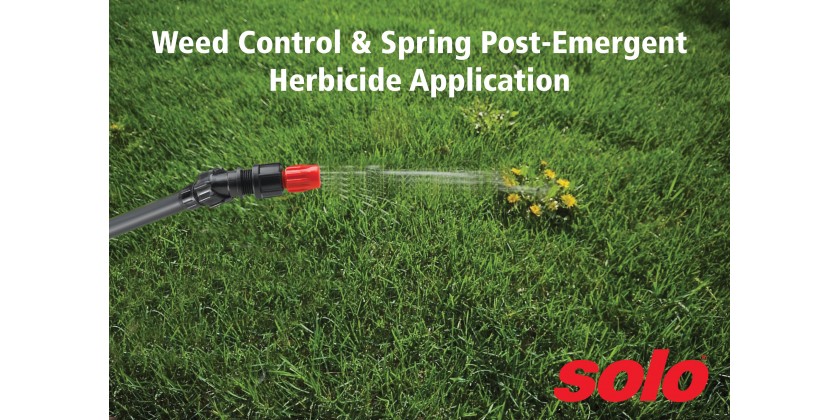
Controlling weeds is an annual, ongoing process. The weed control process usually begins with an application of pre-emergent herbicide in early spring to prevent weeds from germinating.
However, weeds can still show up even with the most thorough pre-emergent applications. This is where a post-emergent herbicide is useful.
If you find yourself with stubborn weeds, or you’re tackling a lawn full of weeds, a post-emergent herbicide can help.
What is a post-emergent herbicide?
If you’re not familiar with the term “post-emergent herbicide,” you may be wondering what that means. A post-emergent herbicide is essentially a weed killer.
Post-emergent herbicides target weeds that have already emerged. In contrast, pre-emergent herbicides prevent weeds by targeting them before germination.
When to apply a post-emergent herbicide
Like with pre-emergent herbicides, timing is critical when applying post-emergent herbicides. Ideally, you want to apply post-emergent herbicides when weeds are still young, and their root systems aren’t as established.
Another factor to consider is temperature. The best time to apply post-emergent herbicides is in late spring and early summer when soil temperatures are between 55 and 85 degrees. If the soil is too cold, the herbicide will not penetrate the soil as deeply. If it is too hot, the herbicide can damage or burn the grass.
Types of post-emergent herbicides
The type of post-emergent herbicide you use is critical. Choosing the wrong post-emergent herbicide can cause serious damage to your lawn if you don’t make the right choice for your job type.
There are two types of herbicides designed to treat weeds differently. The first type is selective. Selective post-emergent herbicides target specific weeds or grasses and won’t kill any surrounding grass or plants. The second type is non-selective. Non-selective post-emergent herbicides will kill almost any type of grass, weed, or plant and are ideal for killing large areas of turf.
How to apply a post-emergent herbicide
Before you apply post-emergent herbicide, decide whether you’re targeting a specific weed or you’re trying to kill weeds over a large area. This will help you determine if you need a selective or non-selective post-emergent.
When you’ve decided what you’re trying to accomplish, use a handheld or backpack sprayer to apply herbicide over the designated area. If you need to use a selective and non-selective herbicide, avoid using the same sprayer for both herbicides. Instead, use different sprayers indicating which herbicide is in each tank to prevent causing unintentional damage to your yard.
Remember to read the label for information about the herbicide and instructions for mixing the herbicide.
An ongoing process
Controlling weeds in your lawn is an ongoing process. Post-emergent is a great way to kill weeds that have already sprouted but is only one piece of the puzzle. Routine lawn maintenance is critical to keep weeds under control.
